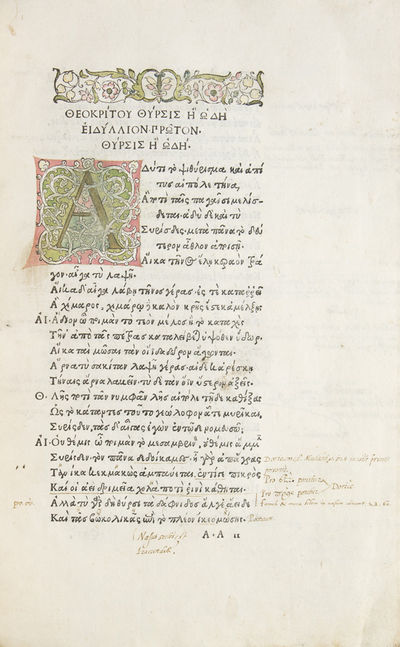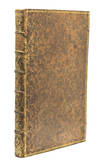first edition Title in Greek and Roman, introduction by Aldus in Latin;, text entirely in Greek. Woodcut decorated initials and floral or stra
1495 · [Venice
by Theocritus; Hesiod
[Venice: Aldus Manutius, 1495. First Aldine edition, and the first complete edition of Theocritus (printing 12 of the 30 Idylls here for the first time); the first edition of HESIOD’S THEOGONY; second edition of his WORKS AND DAYS; and first editions of most of the other minor works (enumerated below); and first setting of quires £I °E F and £K °E G.. Title in Greek and Roman, introduction by Aldus in Latin;, text entirely in Greek. Woodcut decorated initials and floral or strapwork headpieces, ILLUMINATED THROUGHOUT IN COLORS AND GOLD IN A CONTEMPORARY HAND. [140] leaves. 1 vols. Folio, (315 x 210 mm.). Bound in early 18th-century mottled calf, spine (truncated)




